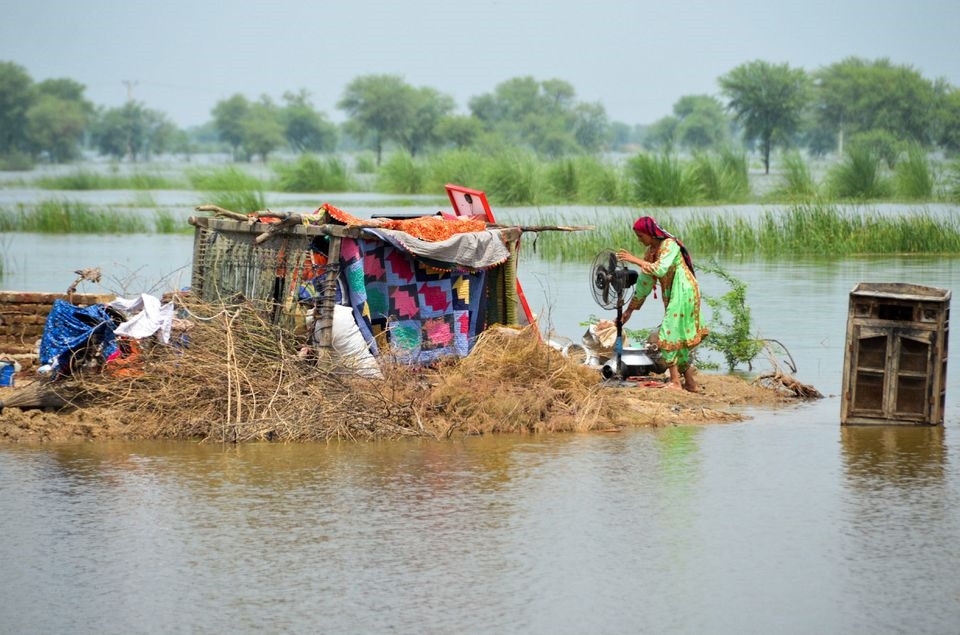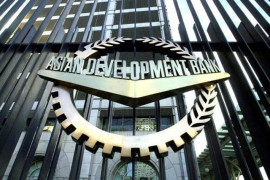
As the year draws to a close, a significant chunk of Sindh’s population, whose lives were upended by this year’s monsoon flooding of Biblical proportions, are still homeless and struggling to keep warm in their makeshift tent settlements.
This year’s catastrophic floods destroyed more than 150,000 houses across Sindh, which displaced thousands of families, who are presently waiting for the government to fulfil its promise of rehabilitating them. Amongst the victims is Zulfikar Ali, from Larkana District, who while talking to The Express Tribune, said that the government needed to show some mercy.
“Our entire house was destroyed. Currently, our entire family sleeps in one corner of the ruins of the house to keep warm in this bitter cold,” Ali lamented. Similarly, Manak Ram, who also hails from Ali’s village in Larkana District, Garilo, said that he and his family had been living in a tent for over four months but had still not heard about any progress on the supposed rehabilitation drive. Some 80 kilometres away from Larkana in Khairpur Nathan Shah, a town in Dadu District, the flood affectees had a similar bone to pick with the government. Ali Murad, who is currently living in a tent along the national highway, said that if the government was not interested in the rehabilitation drive “the least it could do is to take care of the rainwater, which has been standing there for months.” It is pertinent to mention that Dadu District was the worst hit by the floods.
Furthermore, a majority of the district was inundated in the first week of September when the Sindh government made cuts to Manchar Lake, one of Asia’s largest freshwater lakes, due to high water levels. Consequently, according to some estimates at least 4,000 villages in the area were flooded. Presently, despite Dadu being the native district of Sindh’s Chief Minister (CM), the people are yet to see any of the rehabilitation drive that was promised.
Moreover, in a briefing given by the local administration to the CM, earlier in December, it was said that 26 per cent of the district was still inundated and water could not be extracted from more than 100,000 acres of agricultural land in the district. As far as the entirety of Sindh is concerned, according to official sources, rainwater has not been extracted from 20 per cent of the flood hit areas of the province.
However, independent sources put this number at 30 to 35 per cent. With regards to rehabilitation efforts, The Express Tribune learnt that the Sindh government estimates that at least Rs300 billion is required for the reconstruction drive.
Out of the total estimated amount, the World Bank is expected to provide Rs 110 billion and the federal government has promised to allocate Rs 55 billion; however, the provincial government has not yet said anything about where the remainder will come from. Provincial Minister for Local Government, Nasir Hussain Shah, was asked about the shortfall in rehabilitation expenditure and when the reconstruction drive would start. “The destruction caused by the floods is of great magnitude but the Sindh government is taking all possible measures to help the populace. As far as the rehabilitation drive is concerned, it will start from January,” Shah informed while talking to The Express Tribune.
Published in The Express Tribune, December 30th, 2022.

1732071267-0/lana-(2)1732071267-0-405x300.webp)
1727242355-0/Diddy-(1)1727242355-0-165x106.webp)

1732063440-0/elon-(3)1732063440-0-165x106.webp)
















COMMENTS
Comments are moderated and generally will be posted if they are on-topic and not abusive.
For more information, please see our Comments FAQ